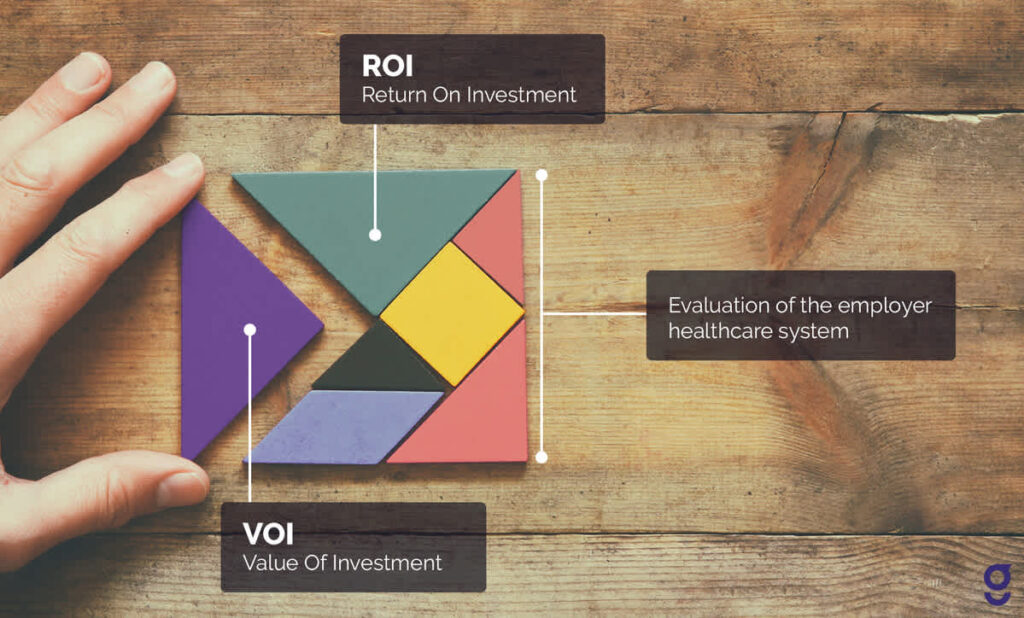Contents
- 1 Wellness ROI And VOI: The Best Employee Well-being
- 2 What Is ROI?
- 3 Benefits of ROI
- 4 What Is VOI?
- 5 The benefits of VOI:
- 6 Where Does VOI Work Better Than ROI?
- 7 What Makes VOI Different From ROI?
- 8 Which Is the Right Metric?
- 9 How To Build A Culture Around ROI?
- 10 Why Focus On VOI?
- 11 Why Invest In Wellbeing Programs?
- 12 How To Create The Best Wellbeing Program?
- 13 Conclusion
Wellness ROI And VOI: The Best Employee Well-being
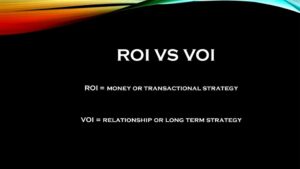
ROI vs VOI, or return-on-investment vs value on investment, are two different ways of looking at healthcare. A VOI puts the focus on the individual’s health at the expense of organizational goals.
A VOI also has an effect on other employees who may be resentful of a colleague’s time off and perceived control over their own schedules. Ultimately, organizations with a healthy culture and high morale outperform those without one: you can’t create a company worth living for without valuing your employees’ wellness and recognizing their accomplishments. Organizations need to start thinking of infrastructure investments in well-being as investments in productivity and competitiveness, not just costs.
ROI stands for return on investment. This is the financial term for in general, what you get out of an investment in something when compared to what you put into it.
What Is ROI?
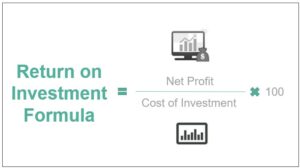
ROI or ‘return on investment is a very important metric for any company. ROI is the calculated difference between the profit gained and the total amount of money that was spent. In other words, ROI helps companies measure how much money they are earning for every dollar that gets invested.
Different companies have different ways to calculate ROI. Such a calculation may include all types of expenses that a company incurs, or it might just take into account certain factors that are considered relevant for the business. In any case, the ultimate goal is always to get a return on your investment by doing so in an optimum manner. This means minimizing costs and maximizing revenue while making sure you do not lose out on money in the process.
Benefits of ROI
ROI can also offer standard benefits such as it helps companies measure the amount of money earned for every investment made. Or it can be used to compare similar options and determine which one is more profitable. Although these might seem like pretty common features, you should bear in mind that not all methods will produce these results, which makes ROI a worthwhile option. The benefits include:
- ROI can be calculated by using all types of expenses or just certain factors that are considered relevant for the business.
- The ultimate goal is always to get a return on your investment by doing so in an optimum manner. This means minimizing costs and maximizing revenue while making sure you do not lose out on money in the process.
- ROI helps companies measure how much money they are earning for every dollar that gets invested.
- ROI can be used to compare similar options and determine which one is more profitable.
- Businesses use the information provided by their ROI calculations to keep track of their progress and constantly improve their approach. So as to ensure efficient operations and optimum performance.
What Is VOI?
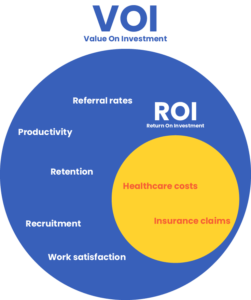 VOI or ‘value on investment’ can simply be described as the quantitative way to measure well-being and its effects on people in an organization. It focuses on well-being through multiple parameters such as improved productivity, higher profitability, and increased engagement.
VOI or ‘value on investment’ can simply be described as the quantitative way to measure well-being and its effects on people in an organization. It focuses on well-being through multiple parameters such as improved productivity, higher profitability, and increased engagement.
Value on investment can be defined as the total return on an investment over a period of time which includes the current cash flow after-tax benefits and future discounted cash flows (after tax benefits) on the investment.
VOI is a systematic way to measure, quantify and monetize the benefits of investing in workplace wellbeing programs. The underlying philosophy is that over a period of time after an employee joins a particular program. There will be visible improvements as far as productivity and performance are concerned. In addition to this, measures such as absenteeism or attrition rates should go down which should result in increased retention rates. These factors can help improve ROI which also means higher revenue for your company.
The benefits of VOI:
VOI is a more holistic approach to measuring the effects of well-being programs. It is very different from ROI which can work as a measuring stick for some specific elements within an organization. But not necessarily the entire organization itself. VOI works on capturing several factors that impact both employees and employers alike. The following are just some examples of how VOI might be beneficial for organizations.
Improves Productivity
Decreased worker output results in companies losing out on revenue which translates into lesser profits. With rising competition in the market, it becomes crucial for businesses to have productive employees who can help them grow by increasing their revenue streams. Employee Well-being programs aim to improve productivity by implementing stress management strategies, teaching emotional intelligence, and boosting communication skills. Research has shown that investing in these programs can help improve productivity by as much as 5-8%.
Helps Understand ROI Of Healthy Behaviors
Statistics show that people who practice good habits are less likely to be absent from work or use their sick leave quota. Not only does this result in cost savings for companies, but it also leads to an improved bottom line. VOI takes into account both tangible costs such as absence due to sickness along intangible costs like loss of revenue because of absenteeism. By doing so it allows companies to quantify not just monetary but also non-monetary factors that impact both their employees and the organization itself.
Increased Decision Making Power
 When employees are more involved in their own well-being, they tend to be happier and more motivated at work. They also get a sense of self-worth which reflects in their performance and productivity levels. Organizations that introduce programs such as office weight loss challenges or injury rehabilitation programs give their employees the power to help themselves. While simultaneously helping the overall organization perform better.
When employees are more involved in their own well-being, they tend to be happier and more motivated at work. They also get a sense of self-worth which reflects in their performance and productivity levels. Organizations that introduce programs such as office weight loss challenges or injury rehabilitation programs give their employees the power to help themselves. While simultaneously helping the overall organization perform better.
Allows Customized Wellness Programs
Different organizations have different needs and requirements when it comes to providing well-being services for their employees. One size doesn’t always fit all so it is important for companies to adopt a flexible approach towards employee wellness. That should include customized products along with ROI parameters based on specific business goals. VOI allows you to select from a wide range of well-being services and create a bespoke program that matches your business objectives.
Where Does VOI Work Better Than ROI?
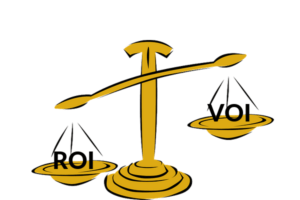
Although both models have their own sets of merits and demerits. It is difficult to point out one model that reigns supreme over the other. However, VOI does work better for certain organizations that need a more in-depth understanding of how well-being initiatives impact. Not only the employees but also the employer itself. This holistic approach to measuring returns from wellness programs can prove beneficial to companies looking to set up a framework for offering well-being services to their employees. Along with quantifying tangible and intangible benefits such as increased productivity or reduced absenteeism rates which in turn result in higher profits.
What Makes VOI Different From ROI?
Well-being investments and wellness programs tend to fall under Employee Benefits where companies try and maximize the value they receive by offering various perks like health insurance.
ROI of employee wellness program talks about how an organization is able to save money through wellness initiatives. On the other hand, the value of the investment is calculated here by looking at how long it takes for an employee to recover any costs they had to bear, including healthcare costs and productivity losses.
Which Is the Right Metric?
The right metric really depends on what you are trying to measure. While VOI focuses more on how wellness programs can be valuable for an employee in terms of saving costs eventually. It is not directly related to ROI which considers only money saved through wellness initiatives into its calculation. VOI is more suited for companies that are looking to have a concrete framework. That includes ROI parameters along with other intangible benefits such as increased productivity.
While both VOI and ROI are metrics that track the overall cost of a program, they measure different things. While ROI focuses on quantifying tangible benefits such as absence due to sickness or injury, it lacks in the area of intangible components such as increased productivity, engagement levels, and relationships with co-workers. On the other hand, while VOI takes all these factors into account along with aspects such as tenure length or training costs involved in creating a strategy for employee wellness. It is unable to pinpoint specific financial gains from an investment in programs such as health fairs or flu shots.
How To Build A Culture Around ROI?

One of the first steps to building a culture around ROI is being mindful about how you are measuring it. The first thing you need to do is decide what kind of metrics are most relevant to your business goals. Think about where your company falls on the spectrum between process-oriented goals and outcome-oriented goals. This will guide how you should measure ROI. For example, if productivity is your number one priority. Then you want to measure successful projects that accomplished their goals through the use of key performance indicators (KPIs). If customer experience is your top priority. Then you can measure successful projects by looking at customer satisfaction levels before and after the project.
Why Focus On VOI?
The VOI method takes into consideration factors such as increased productivity or reduced absenteeism rates which ultimately result in higher profits. Once you’ve identified the metrics that are most applicable to your business. Then think about how they can be measured using analytics software. Look for software that measures ROI based on specific criteria including revenue generated from product/service sales, costs saved by implementing a project, etc. Once you have started gathering this data it is important to be consistent across teams. So the standard method of measurement is applied every time. As standards are established throughout the company, look for ways to use technologies. Like machine learning and artificial intelligence to support insights and allow employees at all levels of the organization access to actionable information within their field of view.
Previously, organizations that wanted to adopt this framework had the difficult task of combining ROI with VOI data into one cohesive metric, which hindered its widespread adoption. The good news is that advancements in technology have made it easier than ever to gather ROI and VOI information. In order to make informed decisions about how companies should allocate their resources.
This enables you to not only measure success but also predict future trends according to the patterns analytics software reveals. It informs company strategies in regard to wellness initiatives.
Why Invest In Wellbeing Programs?
With employees focusing on their well-being, the quality of work they produce increases considerably. They are healthier, fitter, and more enthusiastic about performing better at their jobs compared to those who neglect their health or fail to seek any assistance when needed. Studies show that organizations with help desks dedicated to supporting physically fit employees tend to see an increase in employee retention rates by 25%. This directly reflects in the overall performance of an organization which can be measured using metrics. Such as increased revenue or reduced operational costs through reduced absenteeism and replacement costs.
Valuable services such as health screenings or flu shots, an onsite gym, or a preferred parking space near the building entrance for those who cycle to work are some examples of wellness initiatives. These can have a positive impact on employee motivation and productivity levels. As the quality of work produced by employees increases so do their engagement levels which. As studies show, has a direct impact on ROI as happier employees tend to be more productive at work. In addition, they also feel healthier and rejuvenated, significantly reducing absenteeism rates due to sickness or injury.
How To Create The Best Wellbeing Program?
In order for organizations to benefit from having a framework in place. That enables them to offer the best employee well-being programs along with quantifying returns from these initiatives. VOI is a method that takes into consideration both ROI and intangible benefits. With VOI, companies are able to offer employees a holistic approach to wellness programs. They do so by considering factors such as increased productivity or reduced absenteeism rates which ultimately result in higher profits.
For this reason, it is best to have both metrics in place. ROI for business unit managers while VOI for C-suite executives. And use these results to derive future strategies that can help refine existing well-being initiatives. Along with building additional ones that prove beneficial for the company’s bottom line.
The best way to measure the success of a wellness program is by calculating ROI and VOI. If you’re an employer, it could be worth investing in a holistic approach. That includes both metrics so your company can take advantage of all the benefits these programs have to offer.
Conclusion
Do you want to keep your employees happy, healthy, and productive? Join our employee assistance program and get a healthier workplace.
